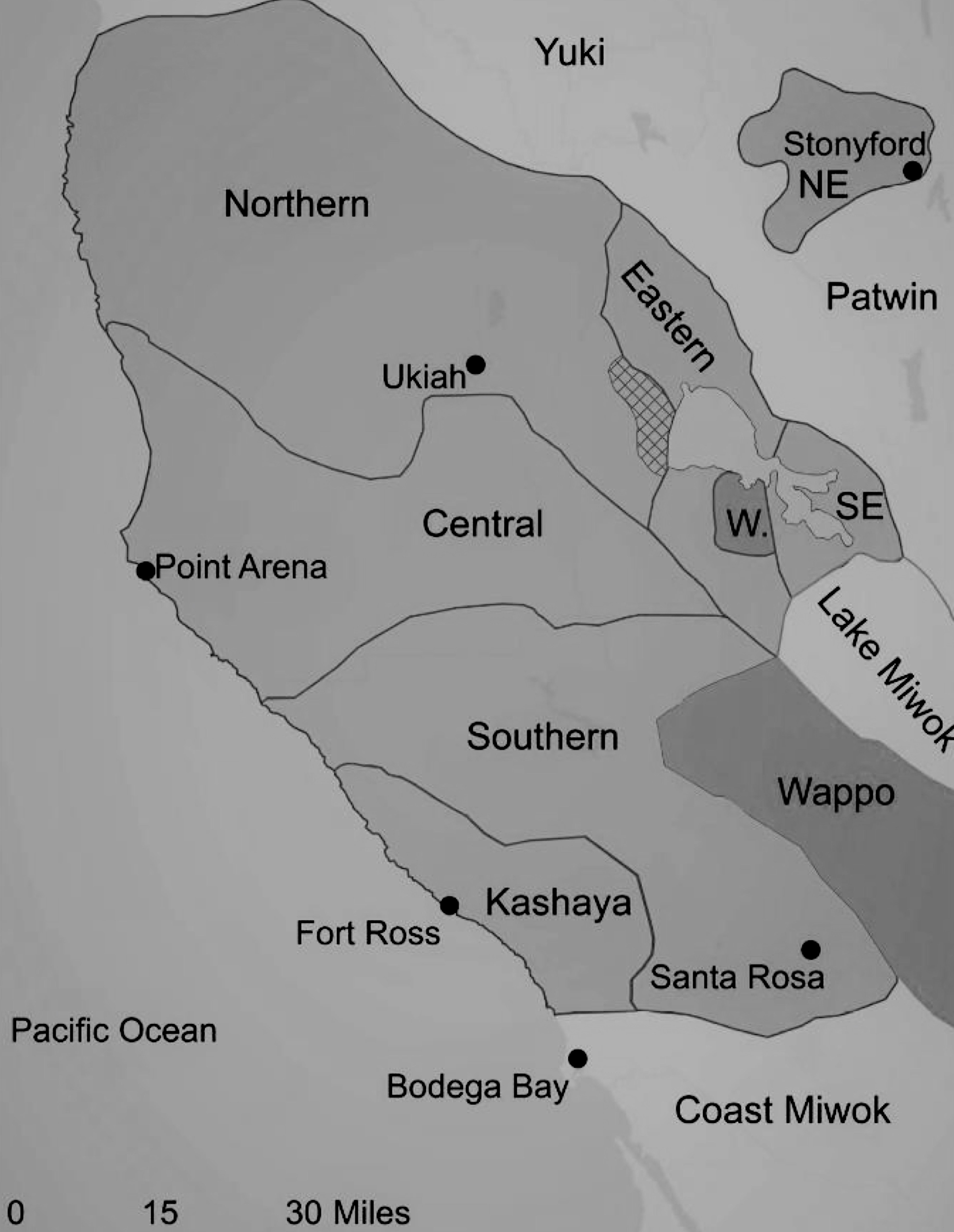Northeastern Pomo
The traditional Northeastern Pomo language area is along Stony Creek on the western edge of the Sacramento Valley. In pre-contact times, the Pomoan languages together probably had around 8,000 speakers (Kroeber 1925). In the 21st century, there are no first-language speakers of Northeastern Pomo (Golla 2011).

Northeastern Pomo (also called “Salt Pomo”) is one of seven languages that comprise the Pomoan language family; the others are Central Pomo, Eastern Pomo, Kashaya, Northern Pomo, Southern Pomo, and Southeastern Pomo. Together, the Pomoan languages form one branch of the hypothesized Hokan language family, the other members of which are Chimariko, Esselen, Karuk, the Palaihnihan languages (Achumawi and Atsugewi), Salinan, the Shastan languages (Konomihu, New River Shasta, Okwanuchu, and Shasta), Washo, Yana, and the Yuman languages (Cocopa, Kiliwa, Kumeyaay, Maricopa, Mojave, Pai, Paipai, and Quechan).
Selected archival materials at Berkeley
Further reading
- Barrett, S. A. 1908. The ethno-geography of the Pomo and neighboring Indians. University of California Publications in American Archaeology and Ethnology 6:1-322. [PDF]
- Golla, Victor. 2011. California Indian languages. Berkeley: University of California Press.
- Lowell, John Bean and Theodoratus, Dorothea. 1978. Western Pomo and Northeastern Pomo. In Robert F. Heizer (ed.), California, pp. 289-305. Washington D.C.: Smithsonian Institution.
- McCarthy, Helen. 1986. Salt Pomo: An Ethnogeography. Journal of California and Great Basin Anthropology. 8:24-36. [PDF]
- Walker, Neil Alexander. 2016. Assessing the effects of language contact on Northeastern Pomo. In Andrea Berez-Kroeker, Diane M. Hintz, and Carmen Jany (eds.) Contact and Change in the Americas: Studies in honor of Marianne Mithun. John Benjamins Publishing Company.